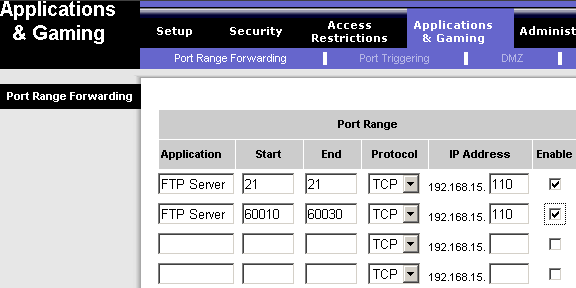diehardbiker
Active Member
- Joined
- Mar 22, 2004
- Messages
- 16,188
- Reaction score
- 16
That is because by default, the router blocks the incoming port used for video, have to go in the router firewall configuration and allow the port pass though to specific private IP address. Not all VP are using same port for video, for Sorenson VP the default port is 15328 to 15348 (It can be changed to different ports), and when these port is closed by router, bam! black screen!
There are total of 65,553 ports available though the Internet for several different applications. Examples are like you know old telephone switchboard, that is the idea by default most plugs on the switchboard inside the router is blocked, meaning operator can't plug in to make connection so once administrator gives a permission and opens the plug in order for operator to plug in for video connection.
Example are shown on Linksys router administrator interface below.

There are total of 65,553 ports available though the Internet for several different applications. Examples are like you know old telephone switchboard, that is the idea by default most plugs on the switchboard inside the router is blocked, meaning operator can't plug in to make connection so once administrator gives a permission and opens the plug in order for operator to plug in for video connection.
Example are shown on Linksys router administrator interface below.

I'm not having any luck with this. I did go to www.ciscojabbervideo.com and did the download and install. Twice, on 2 different computers, once at the time of my last post, and once in the last few days. Same problem both times. Download and install seem to go ok, the system runs through a little self test to check my resources and says my calls should be of good quality etc. Then I try to call my friend. He tells me that his VP rings, but when he picks up I'm not there. No picture at all. On my end, it looks like he's not picking up at all. I didn't post about it the first time on the outside chance that he was just yanking my chain and wasn't really picking up (I'd get 10 rings then a message that the person seemed to be unavailable.) Anyway, this time, he was in an urgent need for contact, so I believe his description. (I eventually just called his VP from a regular phone and used a terp.) I checked my webcam and it's working ok. I can skype etc. So seems like I should be able to do this. Not sure what's wrong.
